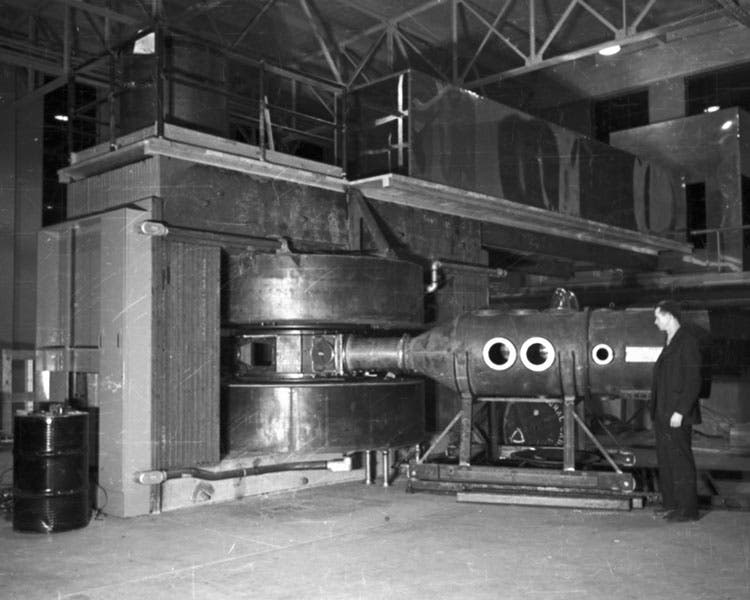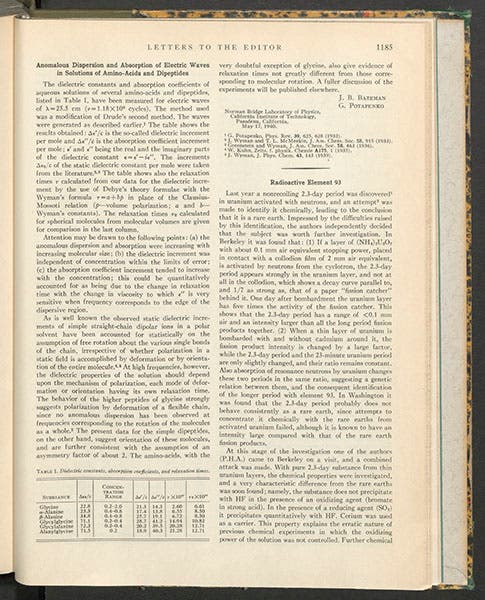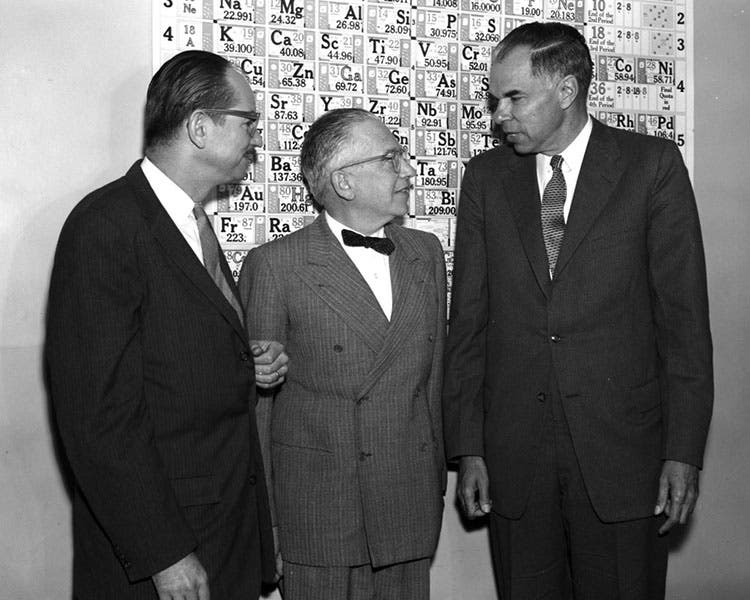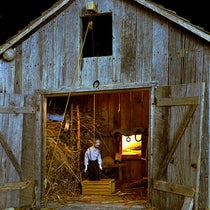Scientist of the Day - Edwin McMillan
Edwin Mattison McMillan, an American physicist, was born Sep. 18, 1907. McMillan worked for almost 40 years at the Radiation Laboratory established by E.O. Lawrence at the University of California, Berkeley, where investigators of atomic and nuclear structure had available to them the world's most powerful particle accelerators, the succession of cyclotrons invented and developed by Lawrence.
The announcement in 1939 by Otto Hahn and Fritz Strassmann that the uranium atom could be split immediately redirected McMillan’s work at Berkeley, as he subjected uranium to beams of high energy deuterons (nuclei consisting of a proton and a neutron) from the 37-inch cyclotron and examined the fragments. As it happened, the new 60-inch cyclotron came online in 1939, providing even more energetic particle bullets (first and second images). McMillan detected two new radioactive materials in the residues, one with a half-life of 23 minutes and another with a half-life of 2.3 days. Working with a former student turned colleague, Philip Abelson, in the spring of 1940, the two were able to demonstrate using sophisticated chemical separation techniques, that the 23-min. material was an isotope of uranium, U239, and that the 2.3 day residue was the result of beta-decay of U239, where the nucleus emits an electron, increasing the number of protons by one and producing a new element with atomic number 93. Uranium has an atomic number of 92. So this was a transuranic element, the first produced in the laboratory. McMillan and Abelson published a short paper in Physical Review in 1940; element 93 would later be named neptunium (third image).
McMillan was called almost immediately to MIT to work on the radar project, but before he left, he detected another new radioactive substance with a two-day half-life, which he suspected was the result of beta-decay of neptunium, meaning another new element with an atomic weight of 94. Glenn Seaborg and others carried on his work and within a year were able to isolate what was indeed a new element, plutonium. The paper announcing the discovery graciously included McMillan’s name as second author, although most of the work was done by Seaborg and his team (the paper was submitted in 1941, but because of wartime restrictions, it was not published until 1946; fourth image). For his discovery of neptunium and his contribution to the discovery of plutonium, Macmillan was awarded the 1951 Nobel Prize in Chemistry, sharing it with Seaborg (fifth image).
The Nobel prize citation applauded McMillan for discovering the first transuranic element, but oddly, this was not the first Nobel prize given to someone for discovering the first transuranic. Enrico Fermi had been credited with essentially the same discovery when he received the Nobel Prize in Physics in 1938. In MacMillan’s Nobel lecture, "The Transuranium Elements: Early History", he discretely began his history in 1939 and did not embarrass the Nobel committee by bringing up the 1938 award. But the fact is, Fermi had been given the Prize primarily for creating elements 93 and 94 by bombardment of uranium with neutrons. He had indeed created some new elements that weren’t there before his neutron bombardments, and Fermi and everyone naturally assumed that the uranium atom had absorbed a neutron, spit out an electron, and become element 93. In fact, Fermi had not created any transuranics at all. Instead, he had split the uranium atom into two parts, and his new elements were those parts, barium and krypton. No one suspected this because no one knew that the atom could be split, and they would not know until late 1938, when Hahn and Lise Meitner figured it out. Had Fermi realized what he had done (his experiments were conducted in 1935), the atomic age would have begun quite differently.
Ever since the 1938 mistake, the Nobel Committees have tended to wait at least ten years before rewarding a discovery, allowing time for misinterpretations to be corrected. McMillan had to wait 11 years for his award, and that seems to be just about right.
Dr. William B. Ashworth, Jr., Consultant for the History of Science, Linda Hall Library and Associate Professor emeritus, Department of History, University of Missouri-Kansas City. Comments or corrections are welcome; please direct to ashworthw@umkc.edu.










